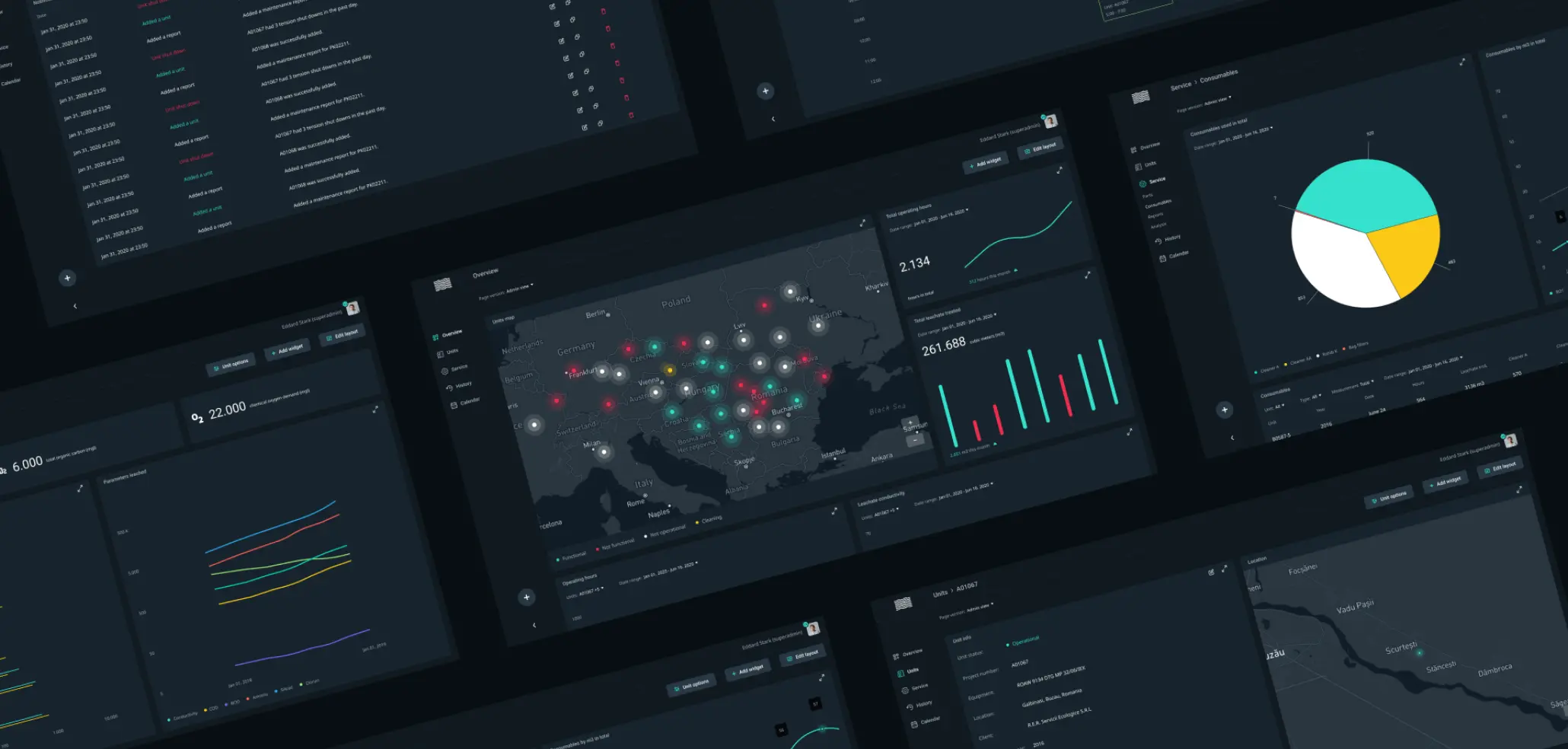Redefining Manufacturing: Industry 5.0’s Digital Transformation After Industry 4.0
In today’s rapidly evolving tech scene, digital transformation represents a fundamental shift in how In today’s rapidly evolving tech scene, digital transformation is a significant shift as businesses transition towards Industry 5.0. This evolution in how businesses operate and deliver value is critical. Our focus here is to shed light on the role of Industry 5.0 in modern business practices and its potential to enhance operations.
The Imperative of Digital Transformation
With technology advancing at an unprecedented pace and customer expectations constantly evolving, embracing digital transformation is no longer optional—it’s imperative. This transformation goes beyond mere technological adoption. It’s about reimagining business operations to drive innovation and growth. Understanding and adapting to this digital evolution is crucial for staying competitive and ensuring your business’s survival and growth.
I. Key Statistics and Facts: Smart Manufacturing and Automation Technology
Smart Manufacturing Market
- Projected Growth: The Smart Manufacturing market is on a trajectory to reach $548.14 billion by 2027, growing at a CAGR of 12.4%. This robust growth underscores the increasing shift towards intelligent, data-driven manufacturing solutions across various industries. (Source: MarketsandMarkets)
- Impact Across Industries: The influence of smart manufacturing is widespread, affecting sectors from automotive to consumer goods. This leads to reduced operational costs and heightened productivity, making it a pivotal element in the competitive landscape. (Additional Source: Grand View Research)
Industrial Automation Market
- Market Valuation: The Industrial Automation market is set to reach $326.14 billion by 2025. (Source: Fortune Business Insights)
- Focus on Productivity: The drive towards automation is primarily to enhance productivity and reduce human error, especially in high-precision manufacturing environments.
- Technological Advancements: Growth in this market is also fueled by advancements in robotics, machine learning, and computer vision technologies. These technologies are becoming more accessible and cost-effective for manufacturers, leading to widespread adoption.
- Robotics Adoption: The International Federation of Robotics states that global robot installations in manufacturing will grow by 14% annually from 2021 to 2023. Industries like automotive, electronics, and pharmaceuticals are leading in adopting industrial automation for complex assembly lines and quality control processes. (Additional Source: Robotics & Automation News)
II. Sustainable Manufacturing and Industrial Transformation
Green Manufacturing Market
- Market Growth: The green manufacturing market is set to reach a staggering $1.7 trillion by 2026, growing at a CAGR of 10.3%. This growth is a clear indicator of the global shift towards more sustainable manufacturing practices. (Source: Allied Market Research)
- Driving Forces: Increasing environmental regulations, a rise in consumer demand for sustainable goods, and a growing understanding of how traditional manufacturing affects the environment all contribute to this surge.
- Technological Integration: The adoption of green technologies, such as renewable energy sources, energy-efficient processes, and sustainable materials, is central to this growth. Digital tools and AI are increasingly employed to optimize resource use and minimize waste, further propelling this sector. (Additional Source: ResearchAndMarkets)
- Energy Efficiency: The U.S. Department of Energy highlights that manufacturers can reduce energy consumption by up to 30% by implementing sustainable practices, underscoring the significant impact of green manufacturing on resource conservation.
Circular Economy in Manufacturing
- Adoption Rate: By 2025, 75% of manufacturing companies are expected to embrace circular economy principles. (Source: McKinsey & Company)
- Circular Economy Principles: This shift from a linear ‘take-make-dispose’ model to a sustainable one emphasizes reducing waste, reusing materials, and recycling. It aims to create closed-loop systems where resources are maximally utilized.
- Resource Efficiency: The Ellen MacArthur Foundation reports that circular economy strategies could reduce industrial waste by up to 45%, highlighting the effectiveness of these practices in resource conservation.
Impact of Digital Transformation
- Productivity and Efficiency Gains: Digital transformation is predicted to increase productivity in manufacturing by 15-20%, cut product development time by 30-50%, and reduce maintenance costs by 10-40%. (Source: Deloitte)
- Optimized Resource Allocation: Digital tools enable more efficient resource usage, whether in materials, energy, or labor. AI optimizes production schedules, supply chains, and energy use, leading to significant cost savings and a reduced environmental impact.
- Enhanced Product Development: Digital technologies, including AI, streamline product development processes. They facilitate rapid prototyping, simulation, and testing, accelerating time to market while reducing resource consumption during development. (Additional Source: Boston Consulting Group)
- Digital Adoption Post-2020: A survey by KPMG reveals that 67% of manufacturers have accelerated their digital transformation strategies post-2020, indicating a rapid adaptation to new technologies in the wake of global challenges.
III. Future Predictions: Industry 5.0 and Beyond
Merging Human Ingenuity and Advanced Technologies
- Industry 5.0:
This new era is characterized by a collaboration between human creativity and technological advancements, particularly AI. Unlike Industry 4.0’s focus on automation, Industry 5.0 aims to balance and enhance human roles with AI support.
- Enhanced Productivity and Job Enrichment:
As we approach 2024, the interplay between AI and human capabilities continues to evolve. AI augmentation is leading to enhanced productivity and the enrichment of job roles across various industries. By taking over complex decision-making and data analysis tasks, AI enables humans to concentrate more on the creative and strategic aspects of their work. This synergy is not only streamlining operations but also fostering innovative and more fulfilling work environments.
While earlier predictions by the World Economic Forum suggested that automation and digitization could create 58 million new jobs by 2022, the current landscape indicates an ongoing trend of job creation and transformation. Updated studies and reports highlight that the integration of AI and automation continues to generate new job opportunities while simultaneously reshaping existing roles to be more engaging and less routine.
The European Commission, along with other global entities, recognizes the significant potential of AI in driving economic growth, job creation, and societal benefits, emphasizing the need for policies and frameworks that support a smooth transition into this increasingly automated and AI-integrated future.
Customization and Personalization
- AI-Driven Analytics: Advanced analytics powered by AI will enable a deeper understanding of customer preferences, leading to highly customized and personalized products.
- Responsive Manufacturing: This trend will lead to more adaptable manufacturing processes, shifting from mass production to mass customization. Research by Deloitte shows that 36% of consumers are interested in personalized products or services. (Additional Source: Forbes)
Sustainable Manufacturing Practices
- Renewable Energy and Waste Reduction: The focus will be on adopting renewable energy sources, reducing waste, and using eco-friendly materials in manufacturing processes.
- AI in Energy Management: AI will optimize energy use, predict maintenance needs for renewable energy equipment, and manage material flows to minimize waste. The International Renewable Energy Agency reports that renewable energy in industry could grow by 24% annually until 2030. (Additional Source: Nature)
Evolving AI and Automation
- Human-Machine Collaboration: AI and automation technologies will continue to evolve, enhancing collaboration between humans and machines for more informed, data-driven decisions.
- Cognitive Automation: Integrating cognitive capabilities in automation will allow machines to learn from experiences and make decisions in complex scenarios. The global AI market in manufacturing is projected to reach $16.7 billion by 2026. (Additional Source: McKinsey & Company)
Interconnected Global Supply Chains
- Blockchain, IoT, and AI: These technologies will revolutionize supply chain management, offering transparency and real-time tracking capabilities.
- Traceability and Efficiency: Enhanced traceability and efficiency in supply chains will be crucial for managing global networks and optimizing logistics. A study by Bain & Company suggests that blockchain could reduce supply chain costs by 20%. (Additional Source: Deloitte)
AI and IoT in Manufacturing
- Integration and Adoption: By 2024, it’s expected that over half of the manufacturers will have integrated AI and IoT into their operations. This integration is crucial for real-time monitoring, predictive analytics, and enhancing operational efficiency. (Source: IDC)
- Operational Efficiency: Organizations implementing IoT in manufacturing operations have observed a 24% increase in efficiency over three years, as reported by Gartner. The convergence of AI and IoT is anticipated to evolve further, leading to more sophisticated, autonomous manufacturing systems capable of self-optimization.
Rise of AR and VR
- Applications in Manufacturing: AR and VR will be increasingly used for training, remote assistance, and product design.
- Integration with AI: Combined with AI, these technologies will provide immersive experiences, enhancing efficiency in complex manufacturing tasks. The AR and VR market in manufacturing is predicted to reach $4.76 billion by 2025. (Additional Source: IEEE)
Edge Computing and 5G Technology
- Real-Time Data Processing: The combination of edge computing and 5G technology will enable real-time data processing and decision-making, crucial for responsive manufacturing operations.
- Enhanced Connectivity: 5G will provide the high-speed connectivity required for large-scale IoT deployments, enabling faster communication and data transfer. Ericsson forecasts that there will be 3.5 billion 5G subscriptions globally by 2026. (Additional Source: Ericsson)
Adoption of Advanced Robotics
- Collaborative Robots (Cobots): The use of cobots will become more widespread, improving efficiency and adaptability in production processes.
- AI-Enhanced Capabilities: With AI, these robots will become more intelligent and versatile, capable of performing a wider range of tasks and adapting to changing environments. The global cobot market size is estimated to reach $9.13 billion by 2025. (Additional Source: Robotics Business Review)
IV. Bridging the Gap: Transitioning from Industry 4.0 to 5.0
Integration of Technologies
- Deepening Technological Integration: The shift from Industry 4.0 to 5.0 is characterized by a more profound integration of technologies such as AI, IoT, and robotics into manufacturing processes. However, this transition also emphasizes a human-centric design approach and a stronger focus on sustainability.
- Digital Transformation: Deloitte reports that 85% of businesses are actively integrating digital technologies in preparation for Industry 5.0, highlighting the widespread recognition of the need for technological advancement in manufacturing.
Balancing Automation and Human Workforce
- Efficiency vs. Creativity: A significant challenge in this transition is finding the right balance between the efficiency provided by automation and the creativity and problem-solving abilities of the human workforce.
- Redefining Roles and Upskilling: This era will see a redefinition of job roles and a push for upskilling employees to work effectively alongside advanced technologies. The focus will be on enhancing human capabilities rather than replacing them.
Embracing Digital Transformation
- Essential Transformation: In the rapidly evolving manufacturing landscape, embracing digital transformation has become a necessity. This goes beyond merely adopting new technologies. It involves cultivating a culture of innovation and continuous learning within organizations.
- Comprehensive Overview: The statistics provided offer a quantifiable overview of the current state and future direction of smart manufacturing, Industry 4.0 and 5.0, automation technology, and sustainable manufacturing practices, underscoring the critical role of technology in driving these sectors.
The Role of AI and Advanced Technologies
- Transformative Forces: AI, IoT, AR/VR, and robotics are redefining manufacturing processes. Their integration leads to enhanced efficiency, customization, and sustainability, making them not just tools but transformative forces in the industry.
- Importance of Adoption: The adoption of these advanced technologies is crucial for future growth and sustainability, as highlighted by the trends and projections in the industry.
Partnership and Collaboration
- Strategic Alliances: In the evolving landscape of Industry 4.0 and 5.0, the success of businesses will increasingly depend on strategic partnerships and collaborations. These alliances are crucial for adapting to rapid technological changes and integrating new digital practices effectively.
- Role of Expert Agencies: Engaging with expert agencies that specialize in digital transformation and sustainable practices can be instrumental for businesses. These agencies offer valuable insights and guidance, helping companies navigate the complexities of this transition and stay competitive in a digitally driven market.
Digital Transformation in Action: A Case Study
Understanding the concepts of digital transformation is one thing, but seeing them applied in real-world scenarios can be even more enlightening. For a practical example of how digital transformation can revolutionize an industry, consider reading our case study on digital transformation in the water treatment sector. This case study, neovision.dev/blog/case-study/water-treatment-digital-transformation, demonstrates how embracing digital technologies significantly improves efficiency, sustainability, and decision-making processes. It provides an insightful look into the tangible benefits and transformative impact that digital solutions can bring to traditional industries.



